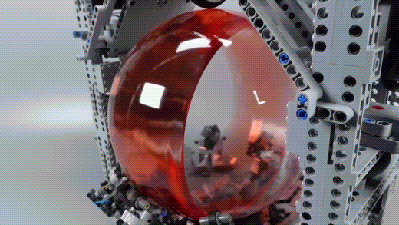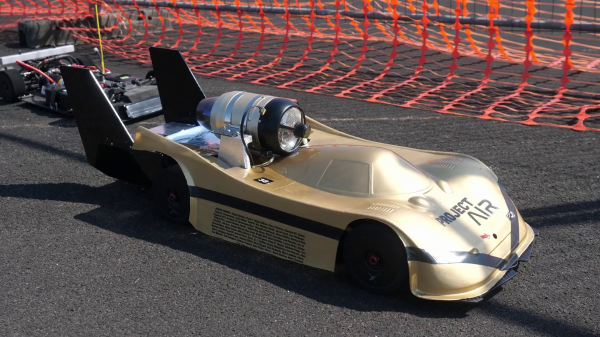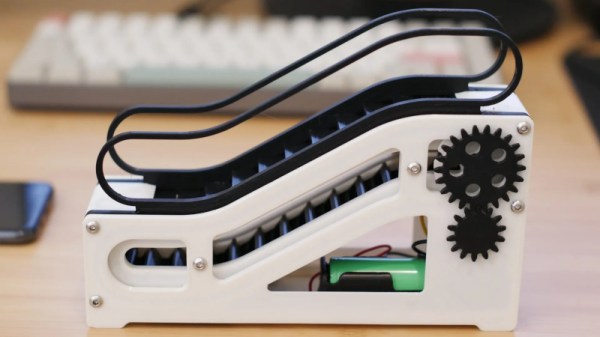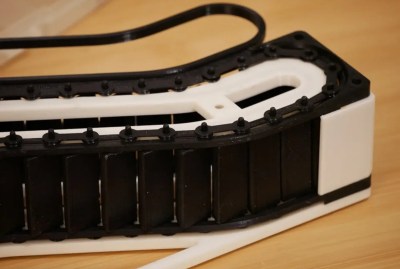LEGO and its Technic line is a great way to learn about all kinds of mechanical things, but it’s also just a whole lot of fun to play with. We suspect the latter reason is what got [Brick Technology] to pursue creating a trippy water vortex with the building toy.
The first design uses a transparent plastic sphere as a water vessel. Inside the sphere is placed a small turbine, turned from the outside via a magnetic coupling. This means the sphere can remain intact, with no holes required, nor complicated seals which can leak. It works well, and produces a vortex when the turbine is spun by a regular LEGO motor. A second attempt elects to rotate the entire sphere itself. Small LEGO wheels are then used to hold the sphere in place on the rapidly spinning turntable. The results are impressive, creating a large and relatively well-formed vortex.
 Naturally, though, the video saves the best for last. The big transparent sphere is installed in a rig that surrounds it completely. The sphere itself is spun up thanks to wheels installed on two different axes. This allows the sphere to be spun in various directions under command from a PlayStation controller, creating more complicated vortexes and flow patterns. A set of swiveling casters are provided to hold the sphere in place as it rotates in various directions, and are damped with springs and rubber bands to stop the rig shaking itself apart.
Naturally, though, the video saves the best for last. The big transparent sphere is installed in a rig that surrounds it completely. The sphere itself is spun up thanks to wheels installed on two different axes. This allows the sphere to be spun in various directions under command from a PlayStation controller, creating more complicated vortexes and flow patterns. A set of swiveling casters are provided to hold the sphere in place as it rotates in various directions, and are damped with springs and rubber bands to stop the rig shaking itself apart.
Is there much purpose to this? Well, not on the surface level, no. However, it would certainly make one heck of a rig for shaking up cocktails. Or, if for some reason you need a noisy yet attractive centrifugal separator, maybe this could do the trick. Continue reading “LEGO Rig Makes Pretty Water Vortexes”




















